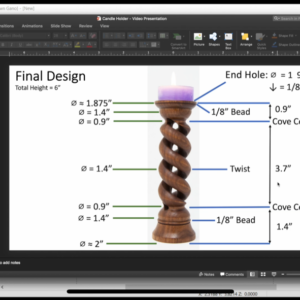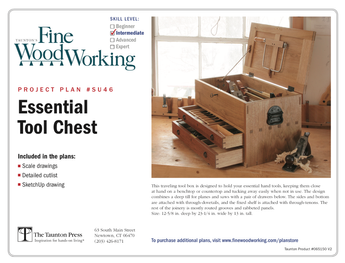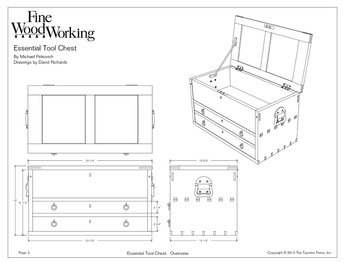I read Doyle Pugmire’s comment on Jeff Mack Woodturning: Woodturning A Goblet with a Twist (Double Helix) that can be viewed at https://www.youtube.com/watch?v=bl45nkMaYvY&list=WL&index=22 “…When measuring out for the twists, I made it for six one inch increments lengthwise and measured the circumference to be 10 1/2 inches divided it by six to get the distances between squares. This ended up giving me 3 twists instead of two that you did (don’t ask me why).”
Is there a ratio that one should use to determine how many longitudinal (end-to-end) lines/sections vs radial (circumference) lines/sections to use in order to have an esthetically nice looking final project? I am a “fairly new to intermediate” level woodturner and I would like my next project to be a barley twist candle holder…I haven’t decided if the total height will be 6″ or 8″. Let’s say the total height will be 6″ with a diameter of 1.875″ (47.63mm). Having a base height of approximately 1.4″ (35.56mm) and a top section height of approximately 0.9″ (22.86mm) will leave me a middle section of approximately 3.7″ (93.98mm) to make my barley twist…these are approximate measurements from a drawing/picture that I have. How do I determine (1) how many longitudinal lines/sections?, (2) how many radial lines/sections? (3) if it will be a double, triple, etc. helix that I end up with? I have included a picture of a similar candle holder that I would like to make (NOT the goblet from Jeff Mack). Any advice from Jack or any experienced turner would be greatly appreciated. I am new/intermediate but would really like to challenge myself for my next project. Thanks in advance.

 Shop Talk Live Podcast
Shop Talk Live Podcast Our favorite articles and videos
Our favorite articles and videos Fine Woodworking New England Event
Fine Woodworking New England Event












Replies
There are a couple of forums devoted to specifically to woodturning.You may find your answers there.
There’s a good how-to in this 2007 article:
https://www.finewoodworking.com/2006/12/15/barley-twist-candlesticks
Thank you very much for sending me the article…it helped a lot.
This forum post is now archived. Commenting has been disabled